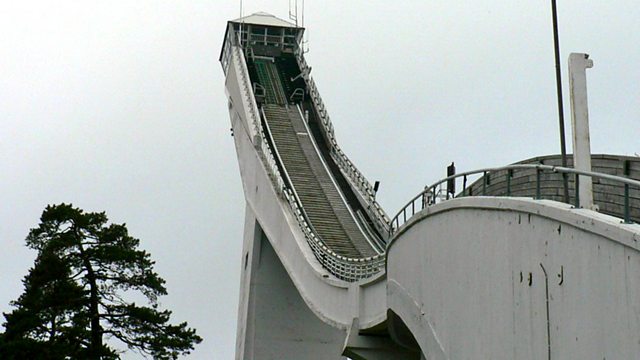Art in a Cold Climate: Thomas Hylland Eriksen on the Holmenkollen Ski-Jumping Hill
Anthropologist and novelist Professor Thomas Hylland Eriksen argues that Oslo's now-demolished Holmenkollen ski-jumping hill was the most important art work in Norway.
Many people would not consider a ski-jump to be a work of art. But for anthropologist and novelist Professor Thomas Hylland Eriksen, Oslo's Holmenkollen ski-jumping hill was the most important art work in Norway.
"The Holmenkollen Hill, white, elegant and majestic, hovered above the city like a large bird about to take flight," says Eriksen. "It was a work of art enjoyed by tens, perhaps hundreds of thousands of people every day". Eriksen employs the past tense because the structure - built for the 1952 Winter Olympics in Oslo - was pulled down and replaced with a more "flashy, hi-tech and efficient" ski jump in 2008.
The architects of the original - Olav Tveten and Frode Rinnan - had created much more than a sporting facility, he says. It was a frugal, elegant structure, which spoke to the Norwegian love of the mountains and the outdoors. "Looking towards Holmenkollen made people more Norwegian." It lives on, he says, as a memory of how architecture can transform a practical structure into a sublime work of art.
This edition of The Essay is one of a series in which five writers each consider the significance of a work of art to their nation, as part of Radio 3's Northern Lights season.
Producer: Andy Denwood.
Last on
More episodes
Next
You are at the last episode
Broadcast
- Fri 18 Dec 2015 22:45����ý Radio 3
Art in a Cold Climate ‒ Can a work of art capture the essence of a country?
Five writers from Northern nations choose artworks which reflect their homelands.
Death in Trieste
Watch: My Deaf World
The Book that Changed Me
Five figures from the arts and science introduce books that changed their lives and work.
Podcast
-
![]()
The Essay
Essays from leading writers on arts, history, philosophy, science, religion and beyond.





